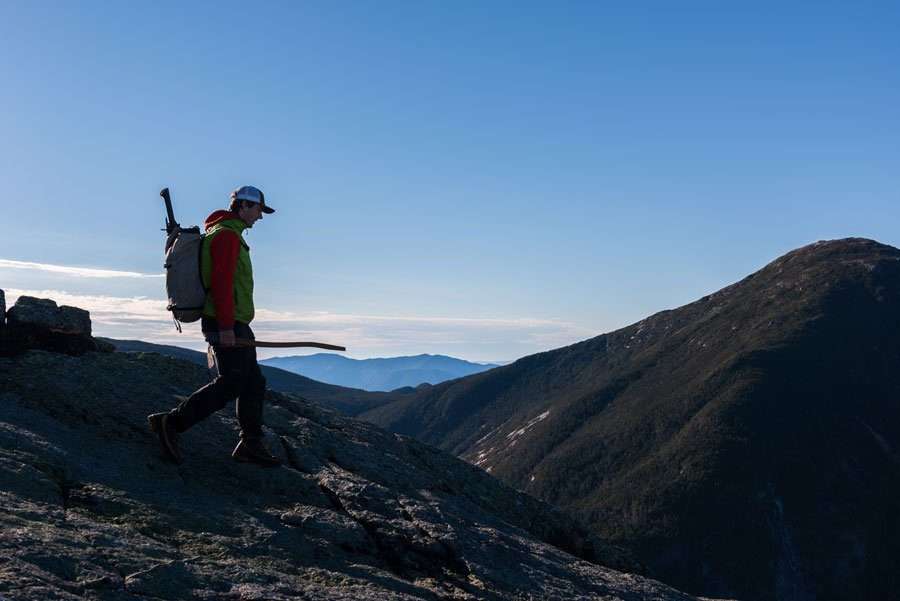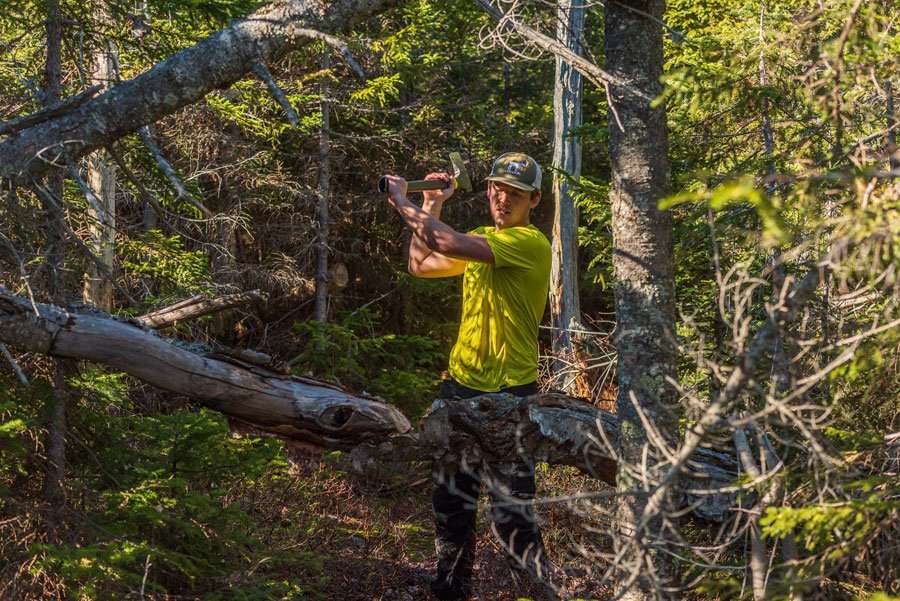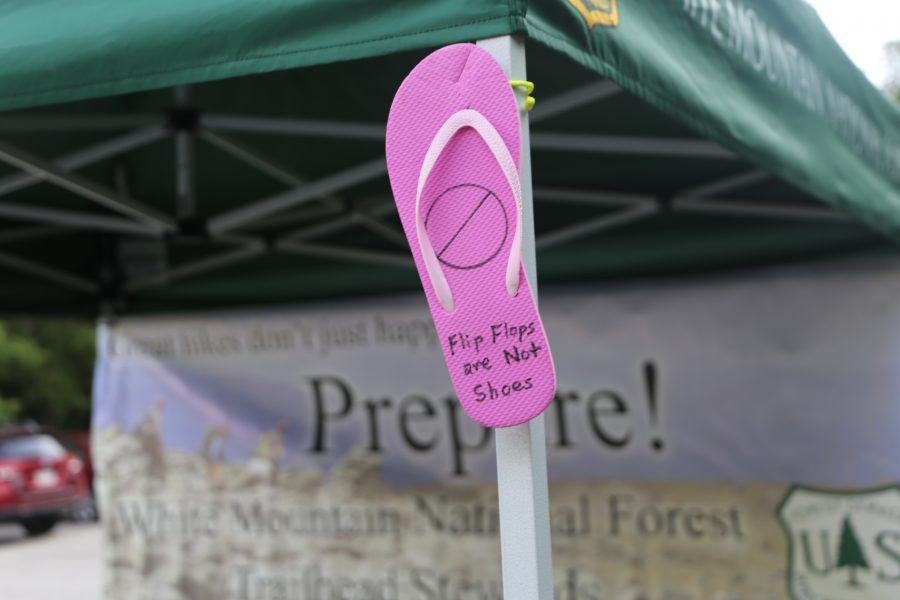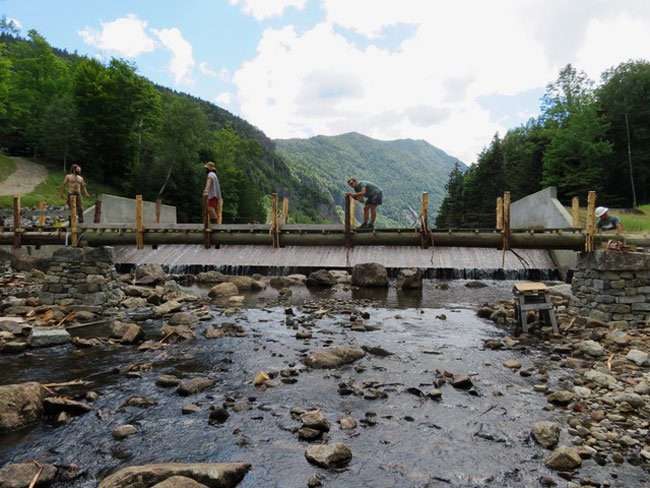
Reflecting on lessons learned from summer trail work
By Cal Seeley
“That’s where I lived last summer,” says my friend Roan, pointing out the car window toward a wooden platform poking from the snow in Keene Valley as we drove to climb Roaring Brook Falls in the winter of 2019.
He reminisced on a summer loaded with demanding labor and simple living, telling stories of boulders zipping downhill on a steel cable, and clearing blowdown with axes while hiking through the High Peaks. As a college freshman in an outdoor recreation program, I was mesmerized.
That spring, I submitted my application to the Adirondack Trail Improvement Society, or ATIS, an organization dating back to 1897 with deep ties to the trails surrounding Keene Valley and in the Adirondack Mountain Reserve. The job provided “rustic” housing in canvas tents next to the Ausable River. It was full-time, rain or shine, with nearly every work day spent toiling on a bridge, in a shaded forest or on a gusty summit.
As a job that physically changes the natural environment, there is a responsibility that comes with the work. This responsibility forces hyperawareness, and to always think more than one step ahead. Spending time in this mental space allows communication with the landscape on a deep, intimate scale. Trees became individuals, each with a distinct personality. Feeling connected to the landscape is powerful and deeply reflective.

The work is humbling. At times it is stressful and painful. A 6-foot long pressure-treated 4×4 is a brutal addition to any daypack. But there is a balance. For the thousands of black flies that have flown into my eyes and ears, there were thousands of moments of realization that I was spending everyday during the summer amongst the mountains that comprise my favorite place on the planet.
Before working for ATIS, I was aware of recreation-related issues impacting the park, like inadequate education resources and infrastructure. Two full seasons later, trail crew has taught me invaluable lessons. What I didn’t expect was to gain a deeper understanding of the breadth of the problems facing our trails.

Searching for solutions
The Adirondack Explorer set out during the 2021 hiking season to learn more about visitor management strategies being tried—and some that seem to be working—in other popular recreation areas. In a series, the Explorer is diving into shuttle systems, trail maintenance, permits, stewardship programs and more. Some of these ideas are already underway in the Adirondacks.
Click here to explore a page dedicated to our solutions reporting
“The biggest issue is that the trails in the Adirondacks were built before sustainable trail design was a concept,” said Charlotte Staats, Trails Manager for the Adirondack Mountain Club. “How a trail is designed and planned really makes or breaks the longevity and sustainability of the trail itself.”
Trail crews are on the front lines to protect the sustainability of the park and its infrastructure.
Trail design techniques, like switchbacks and drainage systems, were not in the minds of the original trailblazers. The paths were created to be trodden by a few locals and woodspeople, not by hundreds of people daily.

With thousands of miles of hiking trails constructed before modern trail design, and too few stewards to look after them, the problem we are now facing was far from unpredictable.
“We have over 100 years worth of backlog on trail maintenance that we need to fix,” said Staats.
The solution is not limiting the amount of visitors to the park. Any move that advocates for limitation, however well-intentioned, is a move rooted in privilege and selfishness. The more people are exposed to the outdoors in a sustainable and effective way, the more awareness, and therefore advocacy, can be brought to environmental issues.
“One of the major realizations I’ve had since working on a trail crew is the degree to which trail maintenance and improvement serves to protect mountain ecosystems from the people that want to enjoy them,” said Joe Pete Wilson, a co-worker from ATIS (and the son of the Keene Town Supervisor with the same name).
In order to improve park infrastructure, trail crews will continue to play an integral role in the solution to our park’s problems. Anyone debating how to be a part of the positive change in the Adirondacks should be aware of the opportunities trail crew provides. There is a need for more workers and firepower across the park, whether it be volunteer or professional, for a few days or a lifetime. Any work will not go unnoticed.
“We need a lot of different professional trail crews of different varieties working on these trails, and we also need a lot of volunteers because people want to give back to the trails they love,” said Staats. “It’s bigger than just one organization or one agency. Nobody can do it by themselves.”
Recreation news and information
Sign up for the “Backcountry Journal” newsletter, delivering trip ideas, info and more to your inbox every Thursday
Or click here to see all our newsletter offerings
"explorer" - Google News
April 14, 2022 at 10:27PM
https://ift.tt/FRTWVP3
A backcountry education - Adirondack Explorer
"explorer" - Google News
https://ift.tt/ExzeAVK
Bagikan Berita Ini














0 Response to "A backcountry education - Adirondack Explorer"
Post a Comment